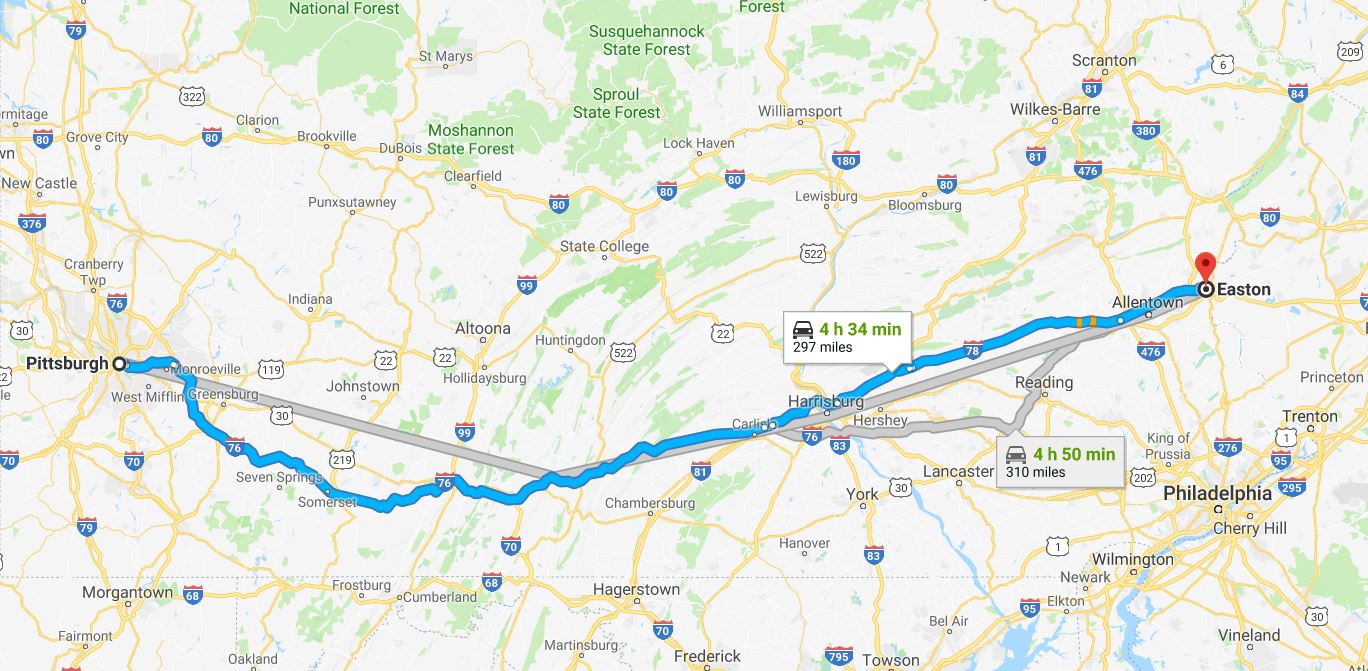
A friend who’s starting to put together a poetry collection asked me recently if I had any tips for how to organize a book. I suggested the standard practice of thinking about the book as having a story or arc, and organizing it around that. And while I still think that’s pretty decent advice, it’s also pretty vague. I also told her I personally like to end on a note of hope and look for the poem that will leave the reader with that feeling, and that’s when I realized what I actually was doing with my own organization strategy—I was creating a map toward hope.
So with that in mind, here are a few things I do or think about when organizing a collection of poems. I’m not much of an authority at this. I’ve only published five books, and I’m not a press editor, but here are principles that help guide me.
Focus on the destination
Think of the book as a trip. On a trip, unless you’re just aimlessly wandering, you usually pick the destination before you start driving. You punch the addresses into your phone, view the route, and then hit the road. Every so often you get a reminder to turn left at the next intersection or exit the highway via the off ramp. None of the individual steps along the route could happen if you hadn’t picked the destination first. When organizing a book, I’ll look for the final poem first (or at least early in the process). That poem is the destination. It’s where I want the reader to arrive at the end of the journey. As I stated earlier, I usually want to end on something hopeful, to leave the reader knowing that whatever happened earlier in the book, that all is not lost. If you want the reader to end on X feeling, you need to know what steps, turns or transformations will need to occur to bring them there.
Detours matter
Most poetry books today (including mine) are broken into smaller sections. Sometimes these sections are thematically linked to tell a particular story (the first parts of both The Trouble with Rivers and Reckless Constellations focus on specific people and narratives). Think of those sections as necessary detours on your trip—but they still need to function as steps toward your goal. If you’re driving across Pennsylvania, you may make detours to visit the Anthracite Museum or Gettysburg, but how will those stops contribute to the overall experience of the trip? How will they help bring you to the end of the book? Do they support a transformation that happens in the book? Do they expand or contribute to themes you’re working toward?
Plan for rest stops
You can’t get through a long trip without stopping to pee now and then. You’ll need breaks, deviations, places to stretch your back, get some coffee. This can be true with poetry collections as well. Too much of one thing gets tiring, even if those things are very good. A friend called one of my poems a “park bench poem,” a sort of poem that allows the reader to take a breath, release the tension. Rests are part of the trip and necessary to reach the goal. Without a break now and then a book, especially one with emotionally intense poems, can be a bit overwhelming. Use rest stops sparingly, and make them useful to the whole, but use them.
Turn by turn directions
No journey (well, few at least) is a straight line. Every turn is a moment for consideration. Every turn is a choice. Your individual poems are also choices, and those choices have consequence in how the book unfolds. The order of your poems, like turns on a trip, can either get you closer to your destination or lead you away from it. You can also end up going around in circles without advancing further toward the goal. I write a lot of fishing poems, but I’ve never grouped them all together just because they’re all about fishing. That would be like getting stuck in one of those terrible New Jersey loop intersections. Instead, I’ll think of what each of the fishing poems is doing, what experience it’s leading the reader in and how it helps us get to the destination.
Going home
Sometimes, as in life and Lifetime movies, a book’s destination is the same place you started. But in order to realize that, the book has go through the motions of leaving home, process the experiences of being away, and eventually find its way back. The journey itself must still be important, otherwise you wouldn’t have written the poems. It may be a round trip, but it’s still a trip.
Of course there are other ways to organize a poetry book, or, as Hayden Carruth did in Scrambled Eggs and Whiskey, don’t organize them at all. These are just ideas that help me. You can do your own thing.

Reblogged this on Miriam's Well: Poetry, Land Art, and Beyond and commented:
I completely enjoyed this–an original concept full of useful ideas.
Pingback: Curtis Smith Interviews Tawni Waters | Small Press Reviews